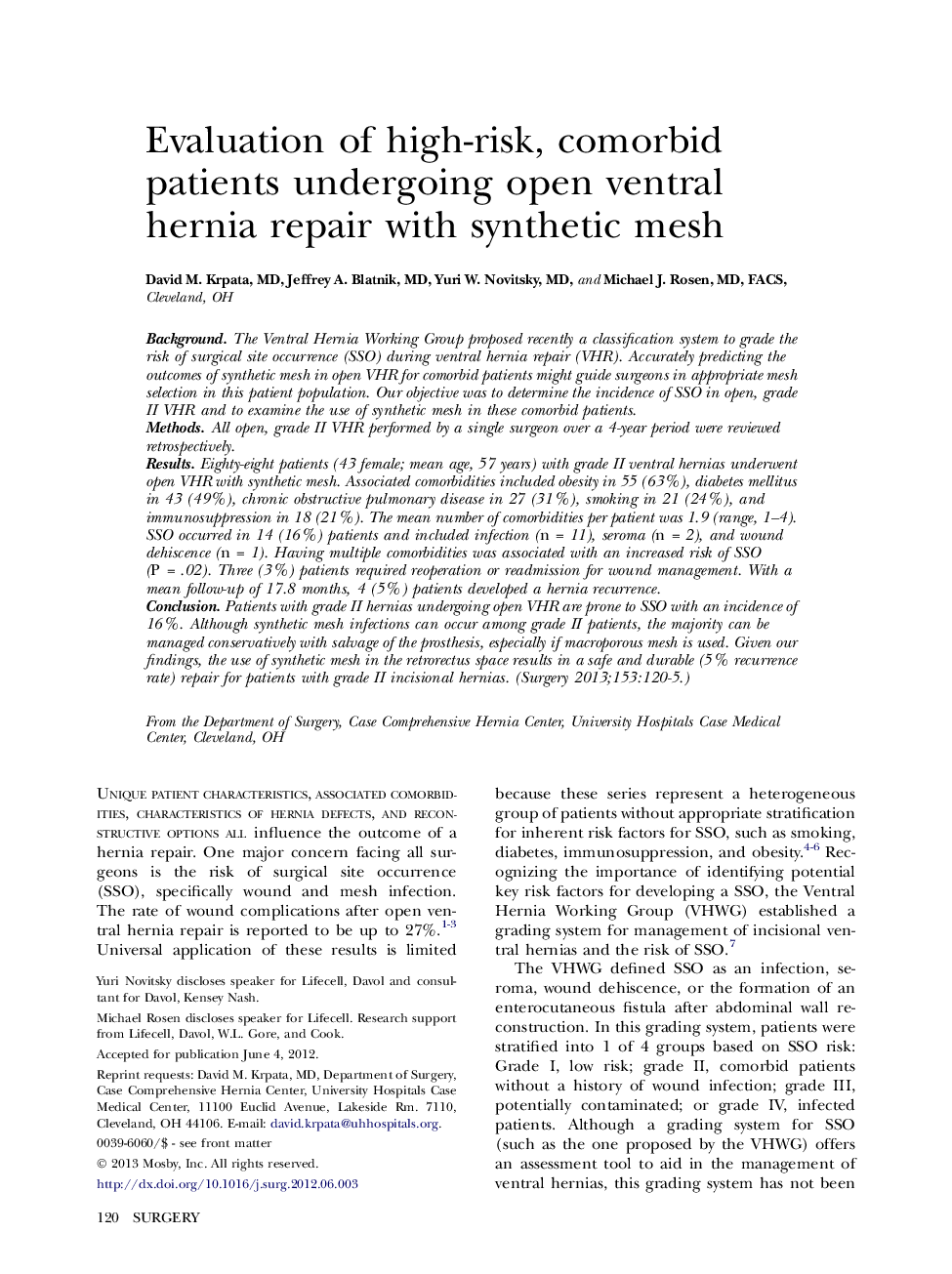| کد مقاله | کد نشریه | سال انتشار | مقاله انگلیسی | نسخه تمام متن |
|---|---|---|---|---|
| 4307696 | 1289254 | 2013 | 6 صفحه PDF | دانلود رایگان |

BackgroundThe Ventral Hernia Working Group proposed recently a classification system to grade the risk of surgical site occurrence (SSO) during ventral hernia repair (VHR). Accurately predicting the outcomes of synthetic mesh in open VHR for comorbid patients might guide surgeons in appropriate mesh selection in this patient population. Our objective was to determine the incidence of SSO in open, grade II VHR and to examine the use of synthetic mesh in these comorbid patients.MethodsAll open, grade II VHR performed by a single surgeon over a 4-year period were reviewed retrospectively.ResultsEighty-eight patients (43 female; mean age, 57 years) with grade II ventral hernias underwent open VHR with synthetic mesh. Associated comorbidities included obesity in 55 (63%), diabetes mellitus in 43 (49%), chronic obstructive pulmonary disease in 27 (31%), smoking in 21 (24%), and immunosuppression in 18 (21%). The mean number of comorbidities per patient was 1.9 (range, 1–4). SSO occurred in 14 (16%) patients and included infection (n = 11), seroma (n = 2), and wound dehiscence (n = 1). Having multiple comorbidities was associated with an increased risk of SSO (P = .02). Three (3%) patients required reoperation or readmission for wound management. With a mean follow-up of 17.8 months, 4 (5%) patients developed a hernia recurrence.ConclusionPatients with grade II hernias undergoing open VHR are prone to SSO with an incidence of 16%. Although synthetic mesh infections can occur among grade II patients, the majority can be managed conservatively with salvage of the prosthesis, especially if macroporous mesh is used. Given our findings, the use of synthetic mesh in the retrorectus space results in a safe and durable (5% recurrence rate) repair for patients with grade II incisional hernias.
Journal: Surgery - Volume 153, Issue 1, January 2013, Pages 120–125